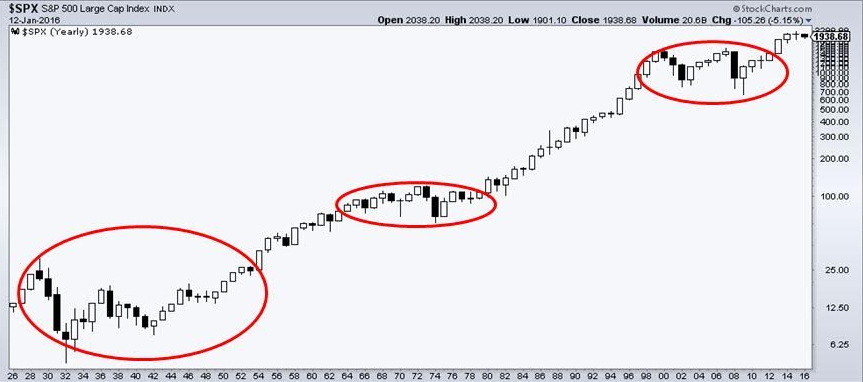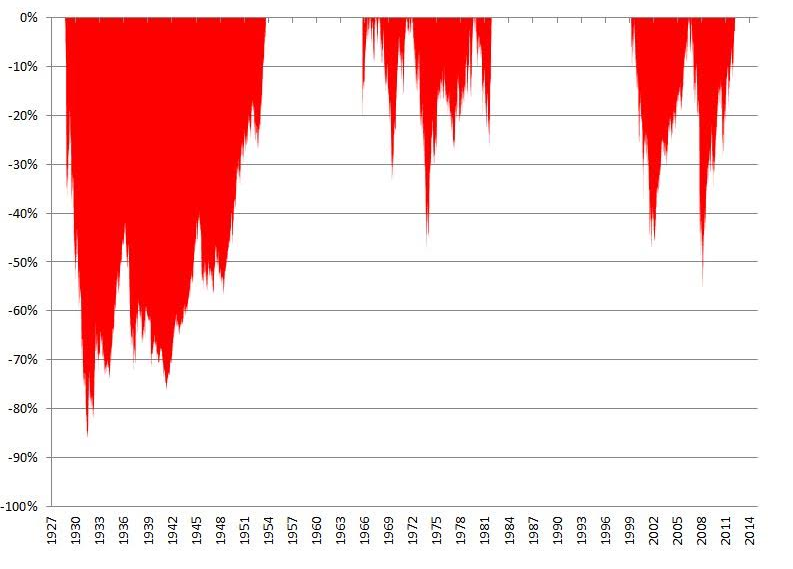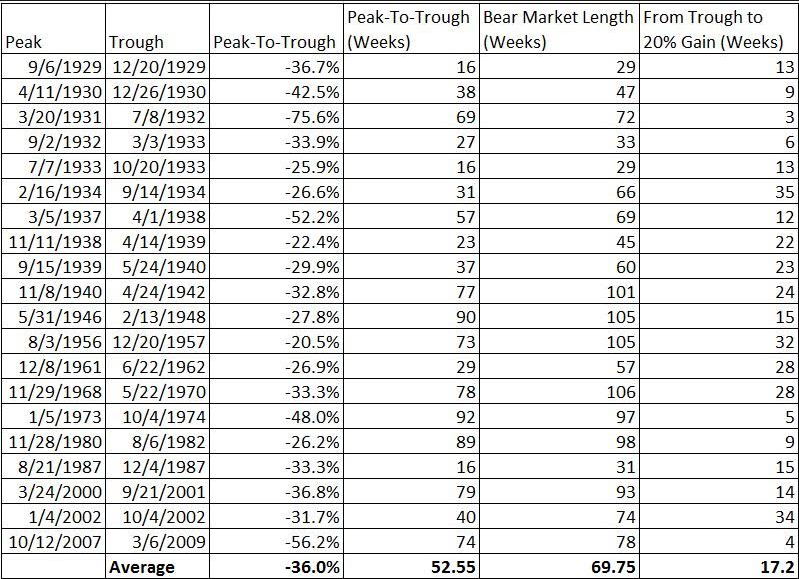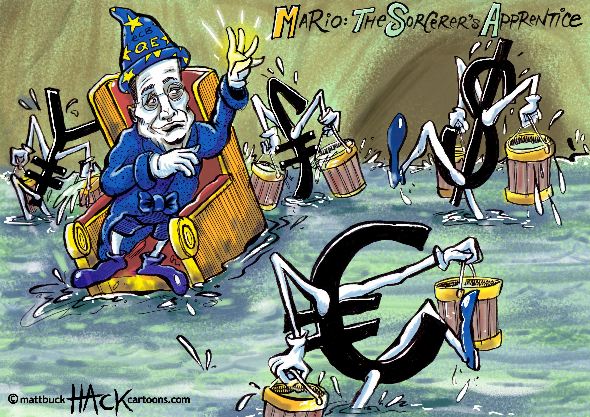(Source : http://jimoshaughnessy.tumblr.com/post/137235375474/short-term-luck-versus-long-term-skill )

Daniel Kahneman, one of the fathers of behavior economics, said one of his favorite papers was “On the Psychology of Prediction (1973).” He claims in the paper that intuitive predictions are often unreliable because people base their predictions on how well an event fits a story. In behavioral economics, this phenomena is called a judgmental heuristic—representativeness, or how familiar you are personally with the story. This is one of the worst ways to make a forecast, because it uses a highly limited data set and allows the law of small numbers to mislead you and your forecast. For example, one study showed that when a doctor is told that a procedure works 50 percent of the time (essentially a coin toss probability or base rate) he or she could get the majority of patients to undergo the procedure if he or she simply added “The last patient who did this is doing great!” The story of success eliminates consideration of the base rate.
I recommend that to successfully make predictions about the long-term results of something such as an investment strategy or the overall direction of a market, you must consider three things:
1. The long-term base rate of the success or failure of the strategy you are evaluating;
2. The tendency of systems where both luck and skill are involved to revert to the mean and;
3. What happened historically after certain extreme observations.
So, for example, when I wrote the commentary entitled “A Generational Buying Opportunity” in March of 2009, I was not relying on any particular insight that I might have had at the time, but rather on the data available to me about what happens in markets after they reach an extreme infection point. It’s important to remember that the stock market is a complex, adaptive system with feedback loops that has elements of both luck and skill. Luck, in the stock market, essentially holds sway over the short-term and is a specific chance occurrence that affects the overall market or individual stock or portfolio can be either good or bad. Luck is a residual—it’s what is left over after you subtract skill from the outcome.
How much luck is involved determines the range of outcomes—where little luck is involved, a good process will almost always lead to a good outcome. Where a measure of luck is involved, a good process will usually have a good outcome, but only over longer periods of time. The luck/skill continuum in investing is almost entirely a function of time. Over shorter periods, your results are highly contingent on luck and chance. This is vital to understand because you might see a bad process provide excellent results due entirely to chance and a good process provide poor results for the same reason.
Consider a simple intuitive strategy of buying the 50 stocks with the best annual sales gains. But consider this not in the abstract but in the context of what had happened in the previous five years:
Year Annual Return S&P 500 return
Year one 7.90% 16.48%
Year two 32.20% 12.45%
Year three -5.95% -10.06%
Year four 107.37% 23.98%
Year five 20.37% 11.06%
Five-year
Average Annual
Return 27.34% 10.16%
$10,000 invested in the strategy grew to $33,482 dwarfing the same investment in the S&P 500, which grew to $16,220. The three-year return (which is the metric that almost all investors look at when deciding if they want to invest or not) was even more compelling, with the strategy returning an average annual return of 32.90% compared to just 7.39% for the S&P 5000. Also consider that these returns would not appear in a vacuum—if it was a fund it would probably have a five start Morningstar rating; it would probably be featured in business news stories quite favorably and the “long-term” proof would say that this intuitive strategy made a great deal of sense and would attract a lot of investors.
Here’s the catch—the returns shown are from “What Works on Wall Street” and are for the period from 1964 through 1968, when, much like the late 1990s, speculative stocks soared. Investors without access to the very long-term results to this investment strategy would not have the perspective that the longer term brings, and without these tools, might have jumped into this strategy right before it went on to crash and burn. As the data from What Works on Wall Street makes plain, over the very long term, this is a horrible strategy that returns less then U.S. T-bills over the long-term. Had this investor had access to long-term returns, he or she would have seen that buying stocks based just on their annual growth of sales was a horrible way to invest—the strategy returned just 3.88 percent per year between 1964 and 2009! $10,000 invested in the 50 stocks from All Stocks with the best annual sales growth grew to just $57,631 at the end of 2009, whereas the same $10,000 invested in U.S. T-Bills compounded at 5.57 percent per year, turning $10,0000 into $120,778. In contrast, if the investor had simply put the money in an index like the S&P 500, the $10,000 would have earned 9.46 percent per year, with the $10,000 growing to $639,144! An investment in All Stocks would have done significantly better, earning 11.22 percent per year and turning the $10,000 into $1.33 million! What the investor would have missed during the phase of exciting performance for this strategy is that, in the end, valuation matters, a lot.
This is a good example of why Kahneman’s paper is so important—people make forecasts not on the data, but how well the prediction fits their perspective and the story behind it. Extrapolating from a small data set can be disastrous to long-term results. The “Most Dangerous Equation” was derived by Abraham de Moivre and states that the variation of the mean is inversely proportional to the size of the sample. A small sample tells you nothing about the true direction of results. Using a small sample—as we see above—can lead to costly errors over the long term.
What this tells us
1. Investors are well advised to look at short-term performance as a worthless indicator for what will happen over the long-term. Indeed, short-term performance can be among the most misleading to investors and should be heavily discounted. The stock market combines both luck and skill, with luck more pronounced over short time periods, and skill more telling over long periods of time.
2. Investors should make decisions using the long-term base rates a strategy exhibits—in other words, they should concentrate on what is probable rather than what is possible. If you organized your life around things that might possibly happen to you, you’d probably never leave your house, and when you did, it would only be to buy a lottery ticket. Consider, on a drive to the supermarket, it is highly probable that you will get there, buy your groceries and get back home to unpack them without incident. But what’s possible? Almost anything—it’s possible a plane flying overhead could lose an engine falling directly on your car and instantly killing you. It’s possible another car runs a red light and kills you on impact. It’s possible that you get carjacked and your assailant kills you in the process. You get the point—anything is possible but highly improbable. It’s only when you think in terms of probability that you will get in your car and go, yet few investors do so when making investment decisions. Our brains create cause and effect narratives after something has occurred that seem to make sense, however improbable the event. Witness anyone who invested in the stocks with the highest sales gains after a great short-term run.
3. In the stock market, short term trends are mostly random and heavily influenced by luck. To succeed, you must ignore them and invest in strategies that have the highest probability (base rate) of succeeding in the future.
4. You will not win the lottery. Avoid buying tickets and avoid what my son, Patrick O’Shaughnessy, calls lottery stocks.
5. Over short periods of time, a good investment strategy can lead to poor results just as a poor investment strategy can lead to good results. Do your homework; understand how a strategy performs over long periods of time and stick with it. If you can do just this one thing, you will be ahead of the vast majority of investors over the long-term.
Related Posts
55
1. The only leading indicator that matters Watch the market leaders, the stocks that have led the charge upward in a bull market. That is where the action is and where the money is to be made. As the leaders go, so goes the entire market. If you cannot make money in…
Tags: market, will, stock, stocks, time, trading
54
George Soros is 84 today. His career is remarkable both for its longevity and its returns – his Quantum fund has generated $39.6 billion in profits over the last four decades, making Soros the most successful hedge fund manager in history. How has Soros managed to stay at the top for so long?…
Tags: returns, short, $, long, investors, year, trading
53
Embarking on a trading adventure involves developing a systematic strategy, understanding trend following, and mastering risk management. Drawing on resources like Covel's "Trend Following" and Schwager's "Market Wizards," traders must cultivate patience and discipline. Continual learning and adaptation are crucial to navigating the ever-changing markets and achieving long-term success.
Tags: trading, market, strategy
52
Enhancing your trading approach requires strategic discipline and a commitment to certain principles that guard against common pitfalls. Here are six ways to level up your trading, ensuring that you maximize gains while minimizing losses: 1. No Big Losses (Cut Losses Quickly) Implement a strict stop-loss policy to protect your…
Tags: trading, stocks, strategy, short, returns, consider, market, stock
52
While the setup is undeniably important, it's the process that often holds the key to resolving trading problems and unlocking the full potential of any trading strategy. A focus on developing, refining, and adapting the trading process can empower traders to achieve consistent success, even in the face of imperfect…
Tags: process, trading, strategy, market










 Hedge fund Fortress says all emerging economies are in the midst of a painful adjustment after a “burst of credit expansion”. Photo: AP
Hedge fund Fortress says all emerging economies are in the midst of a painful adjustment after a “burst of credit expansion”. Photo: AP





